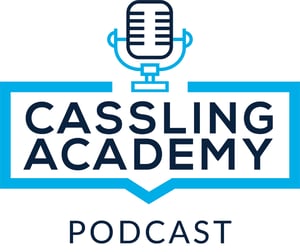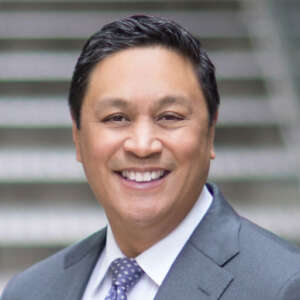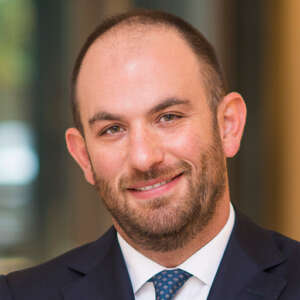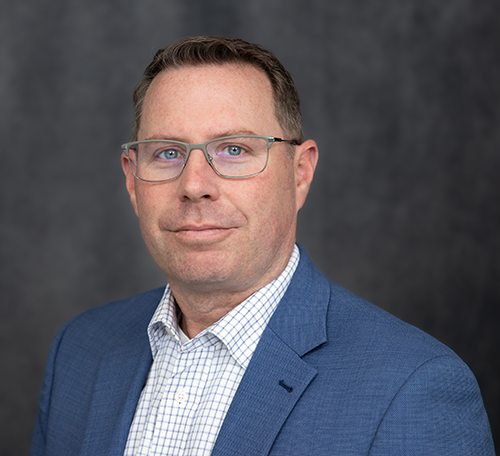Healthcare Management and Revenue Cycle Experts Talk COVID’s Impact
by Kyle Salem, Ph.D. on Aug 14, 2020

On this episode of the Cassling Academy Podcast, Cassling President Dr. Kyle Salem talks to Don Briones and Ben Colton of ECG Management Consultants.
In their wide-ranging discussion, they touch on the short- and long-term impact of COVID-19 on healthcare organizations big and small, adjustments to revenue cycle management, the rise of telehealth, and much more.
The following is an interview transcript edited for clarity and length. If you prefer, you can listen to the full podcast in the player below.
Kyle Salem: Today we're talking about finance in the healthcare industry, especially as it relates to COVID-19. I'm excited to have with me Don Briones and Ben Colton from ECG Management Consultants. Welcome guys and thanks for taking the time to chat with me.
Ben Colton: Thanks for having us.
Don Briones: Great, thank you.
Kyle Salem: Let's start just at a high level: if I were to ask you to take us through what you're seeing from a 50,000-foot perspective, organizations are really in a lot of different phases. States are opening. Some have opened very fully, some have opened less so. Some we're starting to see going back to where they were. What are you guys seeing at a high level?
 Don Briones: First is the volume and the activities that they're seeing at the hospitals and health systems. Many organizations right now obviously are not quite at the normal level. Some are not quite at the expected percentages of where they are.
Don Briones: First is the volume and the activities that they're seeing at the hospitals and health systems. Many organizations right now obviously are not quite at the normal level. Some are not quite at the expected percentages of where they are.
I think the other things that we're seeing is that there have been substantial losses and they have been sudden. They are significant drops. Many organizations are still finding ways in which to put together some kind of plan that ultimately is going to try to make a direct impact as immediately as possible to try to offset the sudden losses they're seeing.
Kyle Salem: Ben, anything you want to add there?
Ben Colton: Unfortunately, I think everybody is pretty aware of the reality of the hit that COVID has taken on the healthcare industry. I think it was the AHA that said something like, by the end of June, there's going to be close to a $200 billion negative impact on hospitals and health systems. And that’s something like a negative 150% impact on operating margins. The bulk of that is because of that unfortunate combination of reduced volumes, slowed cash flow, and increased cost associated with PPE.
The challenge is the high disparity in impact to hospitals and health systems. We've seen some clients, for instance, that absolutely were in the hot bed of getting impacted by patients coming in with COVID. Their beds were full. They had to deal with all of the front-line issues, all that terrible stuff. However, we had some clients that were literally just sitting on their hands. They were paying for staff. They were waiting for the patients to come in. They turned off their electives, but they never showed up.
Now, as we're reintroducing volume, the next challenge is this pretty significant overnight shift to telehealth, which was hopefully going to keep some revenue stable throughout. But the cat's out of the bag with telemedicine and now a lot of those volumes are still staying in telehealth. Even with organizations opening up their clinics, they're not seeing the volumes come back. So patient volumes in total may be back, but the revenues are down because of a lower reimbursement associated with telemedicine.
Kyle Salem: So just from a broad perspective, do you think it's still possible for organizations to stay financially stable?
Ben Colton: Yeah, I think they have to stay stable, right? But it's going to have to be about changing their expense infrastructure and ensuring they are generating as much cash and revenue as they can from the volumes they are seeing. That's going to be a combination of cost containment, reorganization, as well as ensuring your revenue cycle is optimized, your managed care contracts are optimized, and your processes are optimized to ensure you're generating additional percentage points on the gross revenue that you're putting on the top line.

Adapting to New Volume and Revenue Expectations
Kyle Salem: Okay. Let's jump in to some of the revenue-based stuff. You've mentioned volumes are down. Some of those volumes have come back from a telemedicine standpoint. Some are actually, as people open up, starting to come back even from an elective standpoint. What do you think the new norm is for those facilities?
Ben Colton: There's been some discussion about whether or not the return is going to be a V shape or a U shape. I think that's going to be dependent upon the market and how comfortable the patients in that area are willing to come back. Because of pent-up demand from the patients that were canceled back towards the end of March into April, there was this backlog that resulted in a significant inflow of near-term revenue. Are we then going to see that flatten out?
I think that, generally speaking, the consensus that I'm getting from talking to different organizations is they expect that volumes may get back to normal, but their topline revenue is probably going to be 80% of where it was before COVID. That's going to be because of the switch to telehealth and not as much of an appetite for patients coming in for those electives.
Don Briones: The state of the economy and the potential future of where our economic situation may be over the next year or two may also affect volume irrespective of the COVID situation. If we looked at 2019 volumes and matched that against what we're seeing with the recession, we would see natural reductions in volumes because many of these patients that once had employer-based insurances now are faced with having to move toward either government-sponsored insurance or possibly moving to self-pay or being uninsured.
Electives and other types of services that normally would be done on a proactive basis may not be moving as fast or may be delayed significantly until there are adequate avenues for patients to be able to have reasonable and affordable out-of-pocket expenses.
Ben Colton: I think the challenges we had even before the world came undone back in March was a recognition that self-pay collection was going to be a growing component of organizations’ reimbursement, their payer mix. Even for covered patients, the out-of-pocket expense just from increased deductibles, it was going to be critical for organizations to focus on collecting.
Now we're here in an environment where much of the patient population is unemployed or at least temporarily unemployed, and I think our clients are dealing with this conundrum where they need to chase after the patient balance because it's such a growing portion of their revenue. However, they also can't appear in the market as being the bullies that are chasing down these patients when the patients don't have the money to spend or they need the money to be able to care for their households.

Kyle Salem: Are there categories that would have put facilities into a better or a worse scenario? Can we make broad generalizations about geographic or size-related factors that may make somebody worse or better off in general?
Don Briones: I can start with that. I think that pretty much every organization, whether they're small community hospitals or large academic medical centers, is impacted by this. What I've seen is that a lot of large systems with diverse portfolios of service lines and types of patient care have been able to weed out some of the potential financial issues they have gone through, versus smaller community hospitals that have seen significant drop-offs at this point.
Kyle Salem: If I'm watching any of the pundits on TV or the economists, one of the big aspects they talk about is what the recovery looks like. They talk about V-shaped and U-shaped, and it might not be either of those based on what I'm hearing from you guys. Maybe from a revenue standpoint we never get back to where we were, or does it look like something different? And over what sort of timeframe?
Ben Colton: This is unprecedented, right? You can only do so much modeling. My sense based on what we have been seeing and hearing was that there was going to be a pretty considerable spike in revenue based on the pent-up demand and the drive to get back to normal. I think that's going to spike and decrease and then probably have a slower ramp-up.
I think that the ramp-up is going to be highly dependent upon the region and the service mix. It's going to be dependent upon how reactive those organizations were to getting managed care contracts that recognized and reimbursed for telehealth medicine beyond the emergency reimbursement that the payers were paying. Recent articles that came out in Becker's and other places were saying that a lot of those payers are already starting to unwind the reimbursement that they were offering for telemedicine services.
Unless the organizations were being reactive and trying to aggressively negotiate for introduction of telehealth services, we have the potential for ongoing economic impact.
Capital Considerations
Kyle Salem: Let's talk capital. I'm sure I've got a number of listeners that are interested in revamping departments, facilities, rebuilding new ones, expanding, whatever the case may be. How are organizations responding to all this from a capital perspective? Are they finding new ways to access capital that may have been hit from a drop on the bottom line or are we going down a road where people are just simply cutting capital altogether?
Don Briones: We're finding that many are really looking at their plans and prioritizing their capital. With a lot of organizations trying to hold on to their cash, they're identifying which ones fit, I would say one of a couple of different categories. Capital, for example, that is specifically related to regulatory issues or that are urgent enough that would need some immediate attention in order to keep the doors open.
Other types of capital are continuing on because it would either position them for a better place in the market or respond to customer expectations and be able to move to new service types of models like telehealth.
Kyle Salem: It's fair to say from your answer that what you're seeing is those projects which really fit the newer model and or position them to do better from either a revenue or a profitability standpoint, are the capital projects that are ultimately being protected right now.
Don Briones: Yeah, I would say so. Those that would ultimately generate higher return on investment and that ultimately can help fund other more mission-based or strategic-based capital would be an area of priority.
The New Revenue Cycle, and Compassionate Collection
Kyle Salem: Ben, are there things that organizations are doing or are there best practices that you've seen that would help people ensure that over this period they have kind of an optimal revenue cycle process?
 Ben Colton: I think that the best practices are to figure out how you can ensure that you are maintaining the high performing KPIs as volumes begin to get reintroduced and things start to normalize.
Ben Colton: I think that the best practices are to figure out how you can ensure that you are maintaining the high performing KPIs as volumes begin to get reintroduced and things start to normalize.
And I think that what that's going to require is the ability to have a more nimble revenue cycle model. So that's going to be around making sure that you were recommending folks not attempt to bring people immediately back to essential business office, but instead to refine their work-from-home model.
I would also say that we're recommending that our clients absolutely figure out how to introduce more automation, either through RPA or through artificial intelligence. I think that's going to be critical for business continuity in case we have any additional fallout down the road.
The other comment that I would make in terms of just best practices with the work that's being done today, it's absolutely staying on top of your payers and working in collaboration with your managed care colleagues to ensure that we understand all of the rules related to COVID-related reimbursement. Ensuring that we have our telemedicine reimbursement dialed in and that we've got our charge masters set up, our coding protocols set up, all of that good stuff. Then it's making sure that the staff that you do have are prioritizing the work appropriately.
Kyle Salem: What about the back end of that, the collections piece? Certainly I can imagine a community hospital get a little overly aggressive with collections at this point. In the midst of so much economic turmoil, they could very quickly be viewed as an enemy of the community. What do you advise people about from a collections standpoint?
Ben Colton: I'm sure this is highly variable dependent upon for-profit organizations versus not-for-profit organizations, academics, etc., and also based on the communities that they serve. We have heard of some organizations even going so far as to stop making phone calls and even sending statements and absolutely turning off turning patients to bad debt.
I think that that is unfortunately shortsighted. Instead we are suggesting that organizations reestablish or reorganize how to ethically pursue patient balances while demonstrating empathy and understanding of the situation. How that's going to happen is encouraging clients to make sure they fully understand patient responsibility for the services that they're being provided. Informing them in advance of the patient care event, creating some flexible payment and financing options and figuring out alternative ways for collecting those balances.
While there is a need to try to collect money upfront, we're also needing to figure out how to do that in more of a cashless environment. It's things like using touchless payment options and other similar tools. It's not about avoiding the patient collections process, it's about rebuilding it and understanding the new normal.
Doing More With Less
Kyle Salem: Yep, good point. We've talked a lot today about things that sit inside the realm of the CFO in a facility. While I'm sure we have COOs and department leaders and VPs and probably even some CEOs that listen, are there things from a strategic or an operational standpoint that you think need to be done to balance the reality of where the financial implications are today?
Ben Colton: Some of what we're hearing is doing more with less. Can we do more with less clinical support staff? So it's workforce management. I think the other thing that we're hearing is really rethinking your ambulatory strategy. Some of our clients are moving away or they're reconsidering their practice acquisition strategy and instead thinking more of an affiliation strategy, continuing to build out their ambulatory care network, but not doing it in such a way that is prohibitive from a cost perspective.
Lastly, it's really doubling down on telehealth. I think there is a recognition that this is part of the health care continuum now. We're hearing organizations having gone from 300 a month to doing 1300 a day and that number isn't decreasing that much even with practices starting to open back up. It's about thinking about how do you make sure that you have that infrastructure set up, how do you make sure it's controlled and how do you make sure that it's effective?
Don Briones: Adding on to what you're saying Ben, relative to operating efficiencies, one area I see is ensuring that staff, particularly on the front lines, get relief in some ways. There's been a lot about burnouts by clinicians and physicians and whatnot. I think in addition to looking at this from a financial perspective, look at it in terms of how to simplify operations so that things are done in a much more streamlined manner so that we're not burning out staff in the process of increasing efficiencies.
Kyle Salem: Yeah. Great thoughts. Before we wrap up, any last messages you want to leave our listeners with? Wisdom, things you've learned, anything that's surprised you about what you've found out as we've come through at least the first half of this COVID change to our industry?
Ben Colton: I'll take a stab and Don, you can finish this up. I think that there was a hope, especially in the early April timeframe, that this was a catastrophic event and that we would bounce back to how life was before and we were just taking the hit in the near term. I think that there is a recognition that this is completely changing how we need to do our business, how we need to be able to be more nimble within healthcare.
But I think that the answer is not just to cut and cut and cut your expenses, I think the answer is to think about how do you develop a more nimble infrastructure that can sustain the sort of challenge while continuing to provide high-quality healthcare to the patient population.
Kyle Salem: Don?
Don Briones: For me, I see this as really an opportunity to take advantage of initiatives that have been out there that many organizations have delayed that right now we have an opportunity to actually move forward with. I think often times what I learned from one client is you always have to kind of follow the money to see how and when services can be actually brought forward into the mainstream. And with the advent of and the hope that with these new service models being able to get the type of payment structures that they're able to get, we can now move forward and really service patients in a much better manner.
Kyle Salem: Yeah. Thank you. Really great conversation. Don and Ben, you guys have been great to talk with. To our listeners, thank you for tuning in. We look forward to talking with you more next time and we hope you enjoyed today's podcast.
Meet the Author
Kyle Salem, Ph.D.
President of Cassling
Kyle joined Cassling in February 2005 and was named President in 2017. Kyle holds a doctorate in Biomedical Engineering as well as business education through the Kellogg School of Management. Prior to Cassling, he worked with Siemens Healthcare's Magnetic Resonance Imaging division serving as a scientist and manager.
Today, Kyle strengthens community healthcare by working with customers to ensure Cassling's offerings meet their short- and long-term goals, as well as clinical, financial and organizational needs. With a focus on helping customer increase quality and decrease cost, he manages Cassling's corporate strategy, advising the organization on industry direction and trends to help intelligently drive the growth, while exploring new business opportunities.
Click
here to request more information about Cassling's Speakers Bureau or call 800-228-5462 ext. 1117.





Comments